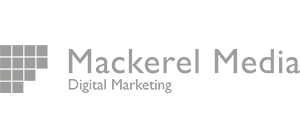How Did Google Ads Change in 2018?
Today is our first day back in the Mackerel Media office following the Christmas break. So what better time than now to look back at some of the biggest changes Google brought us in the past 12 months – and what they could mean for 2019?
No More Google AdWords
Ever since its launch in October 2000, Google’s core advertising platform has always been known as Google AdWords. However, in July 2018, we were introduced to the platform’s new moniker – the much more streamlined Google Ads. While a simple change in name may not seem all that impressive in itself, Google also introduced us to a new version of DoubleClick known as Google Marketing Platform and revealed Google Ad Manager, a shiny new programmatic platform for large publishers and businesses.
So why is this so important to advertisers that it is the first item in our 2018 lookback?
Well, the AdWords re-branding symbolises Google’s ambitions to move away from simple text and keyword based responsive advertising and into smart, AI-driven searches which can be triggered by user behaviour, interests and even physical location. Offline, we’re seeing Google strongly push their Smart Speaker and Hey Google technology, giving us some idea of how Google expects us to perform searches in the future.
To put it another way, Google AdWords doesn’t need ‘words’ to advertise anymore. The time of Google Ads is now.
New Google Ads Interface
Along with the Google Ads name change came the introduction of an overhauled Google Ads UI – and boy, did it divide opinions in the digital marketing industry! Now, six months on, I can take a more objective view of the new interface and can report… I really like it!
The new interface isn’t without its flaws – but overall the platform is vastly improved over the old, which had been mostly unchanged for 10 years. From a practical standpoint, the new interface gives equal weighting to all campaigns types which we felt was lacking in the old UI – finding Smart Shopping Campaigns and working on them is as easy now as working on your Search campaigns, which again hints at Google’s advertising ambitions in the future.
Better Reporting
One of the most useful features of the new Ads interface is the ability to quickly find and report on information that is most relevant to your digital marketing campaigns. As well as being able to surface potential optimisation strategies, the new Google Ads interface has introduced a number of easy-to-reach reports, which for the most part have always been beneficial in our day-to-day management of accounts. These new reports include a highly detailed breakdown of Ad Position and Rank, as well as competitor activity comparisons – both of which can provide great in-sight for clients.
On the Google Analytics side, Session Quality and Conversion Probability reports are beginning to apply machine learning to web analytics data, which in turn helps marketers define high quality audiences and include them in Smart Lists and Smart Goals for marketing campaigns. This suggests that in 2019 Google will continue to put greater emphasis on the importance of using Google Ads & Analytics together to optimise your account, as well as a possible hint that one day these may not be seen as separate tools at all…
Intelligent Targeting & Smarter Keywords
By now, it might be obvious, but 2018 was the year that fully Google embraced Artificial Intelligence.
From the introduction of Smart Shopping campaigns (which can intelligently adjust bids and product recommendation in the Google Shopping format based on user history and intent), to the introduction of responsive, dynamic ad-creative formats and automated Impression Share Targeting – Google has spent the past 12 months introducing us to new, intelligent ways of getting our ads in front of the right people at the right time.
For most advertisers, Goal Based Campaigns have been one of the most interesting additions to Google Ads in the past 12 months. Simply by picking the results you want to achieve – such as increased leads, greater brand awareness or higher conversions – Google Ads can now provide you with a greater understanding of which Google Ads campaign types will perform best for you and your budget, while it’s powerful Machine Learning can provide countless automatic bid and placement optimisations.
However, one of the most shocking changes of the past 12 months was Google’s announcement that it has applied its AI technology to one of the core staples of modern PPC marketing – the [Exact Match] keyword. From September, Google’s machine learning has meant that close variants of keywords which show “intent” – such as implied queries and paraphrasing – can trigger the previously fixed [Exact Match] keyword type. According to Google, testing has shown that advertisers see approximately 3% more clicks and conversions using this technology, however many have reported that this has just resulted in less relevant queries triggering keywords.
Updates to Ad Formats
From the roll-out of non-skippable TruView YouTube bumper ads to the introduction of a third text-ad Headline, we have seen some significant changes to the formats advertisers can use in 2018. And, unsurprisingly, Google’s AI algorithms played a huge roll here too during the past 12 months.
The most useful of these updates has undoubtedly been the introduction of Responsive Search Ads – an updated version of Dynamic search ads – which uses machine learning to match user intent to ad-creative from a pool of up to 15 headlines and 4 descriptions, individually tailoring the message a user sees to their initial search query as well as their historical search behaviour and in-market intent to increase ad engagement and CTR%.
What Does 2019 Hold for Google Ads?
I hope by now you’ve noticed a recurring theme in this blog post; Google is pushing AI in a bid to capitalise on non-traditional methods of online advertising. In 2019 expect to see the introduction of tools designed to target people using voice search technology, as well as an increased reliance on Machine Learning and AI to allow you to better target the audience that matters most to you.
What does 2019 hold for your digital marketing? If you want to find out, drop us a quick email to hello@mackerelmedia.co.uk.

 Photo by Ricardo Gomez Angel on Unsplash
Photo by Ricardo Gomez Angel on Unsplash
